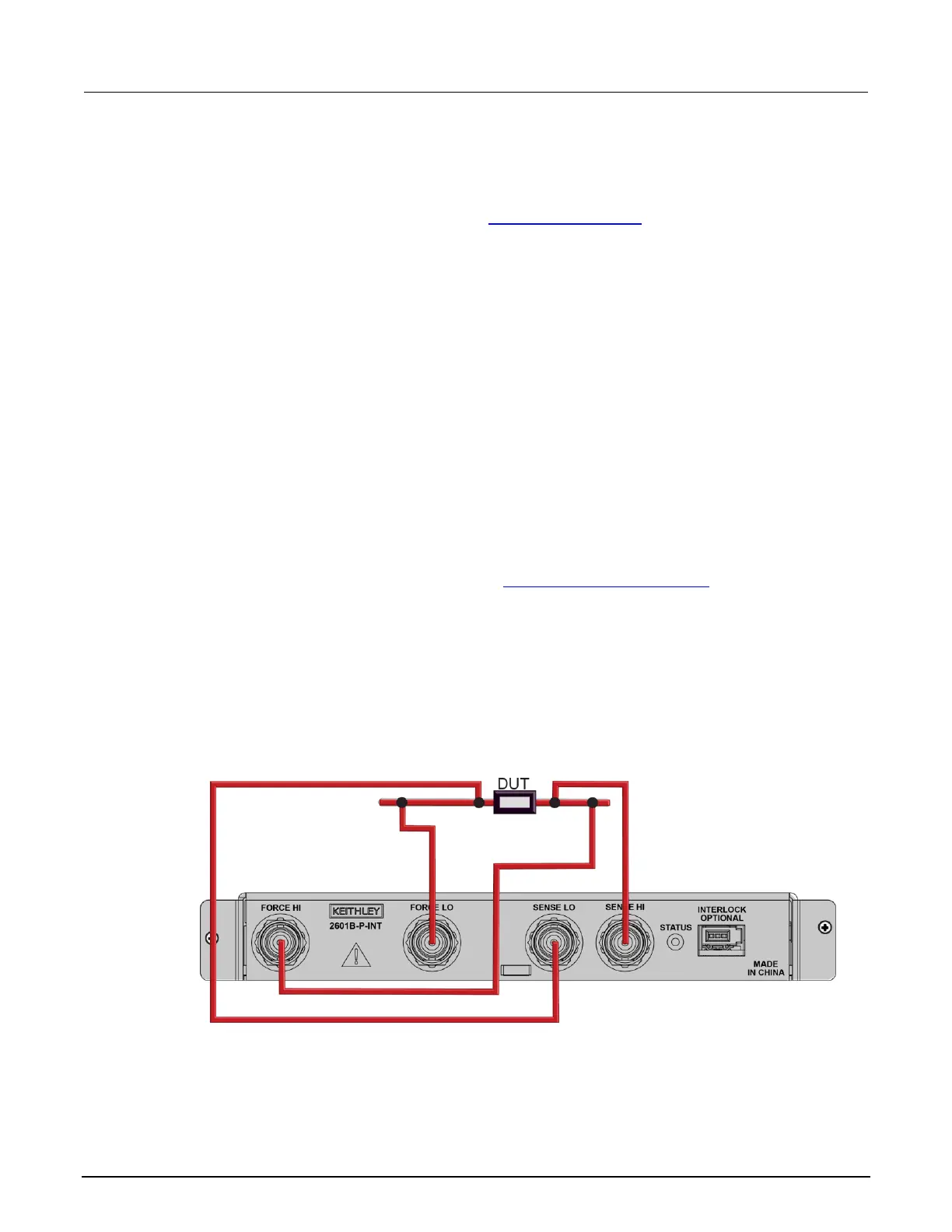When the pulser is enabled, you must use 4-wire remote sensing connections. The instrument uses
remote sensing regardless of the sense setting.
When the pulser is disabled, the default sense setting is 2-wire local. If you need to use 4-wire remote
sensing, you must change the sense. Refer to Sense mode selection (on page 4-20) for information.
When you are using 4-wire voltage sensing, it is critical that you establish and maintain the proper
Kelvin connections between the corresponding force and sense leads to ensure the proper operation
of the instrument and to make accurate voltage measurements. Sense HI must be connected to
Force HI, and Sense LO must be connected to Force LO.
When sourcing voltage with remote sense, the instrument relies on the voltage detected with the
sense lines to provide the proper closed-loop control of its output voltage and to properly limit the
voltage across the device-under-test. If a sense line becomes disconnected from its corresponding
force line, an erroneous voltage is sensed. The output voltage may be adjusted to a level that is
radically different than the programmed voltage level. In addition, the voltage across the device may
exceed the programmed source limit voltage, possibly causing damage to the device or test fixture.
In both cases, the voltage is not measured correctly if a sense lead becomes disconnected from its
corresponding force lead.
You can use contact check to verify that the sense leads are connected before enabling remote
sensing or before turning on the output. Refer to Contact check measurements (on page 4-12).
Use 4-wire remote sensing for the following source-measure conditions:
• When the pulser is enabled
• Sourcing or measuring voltage in low impedance (<1 kΩ) test circuits
• Enforcing voltage compliance limit directly at the DUT
Figure 47: Four-wire 2601B-P-INT connections (remote sensing)

